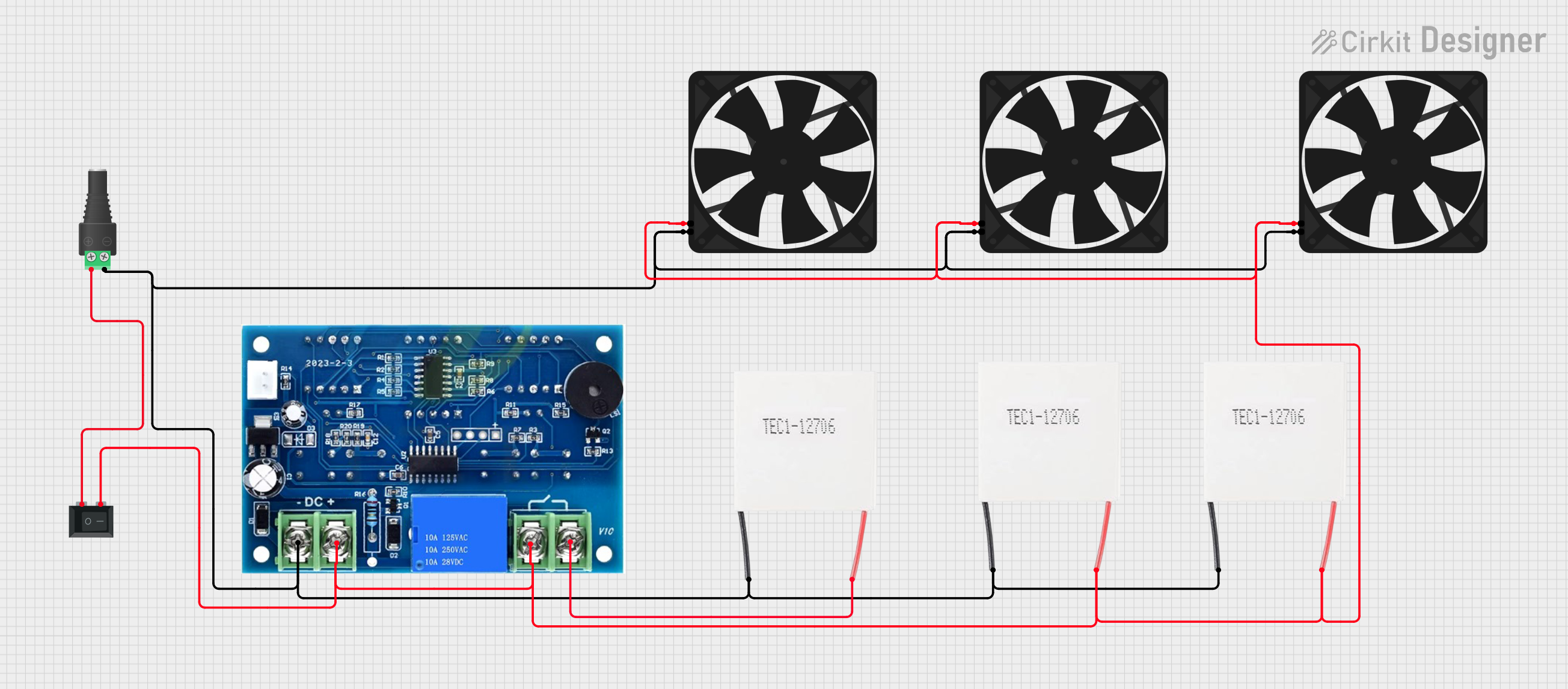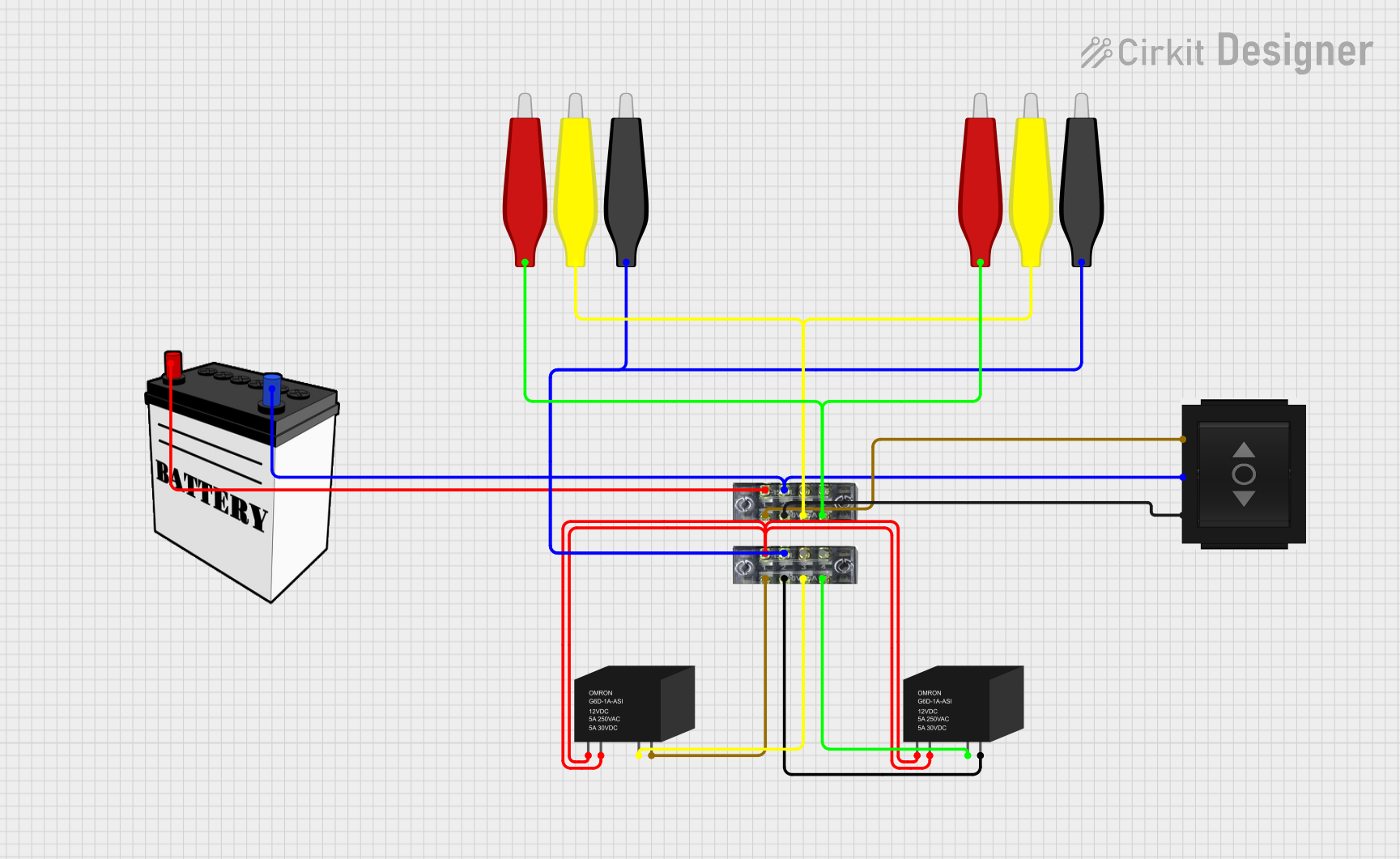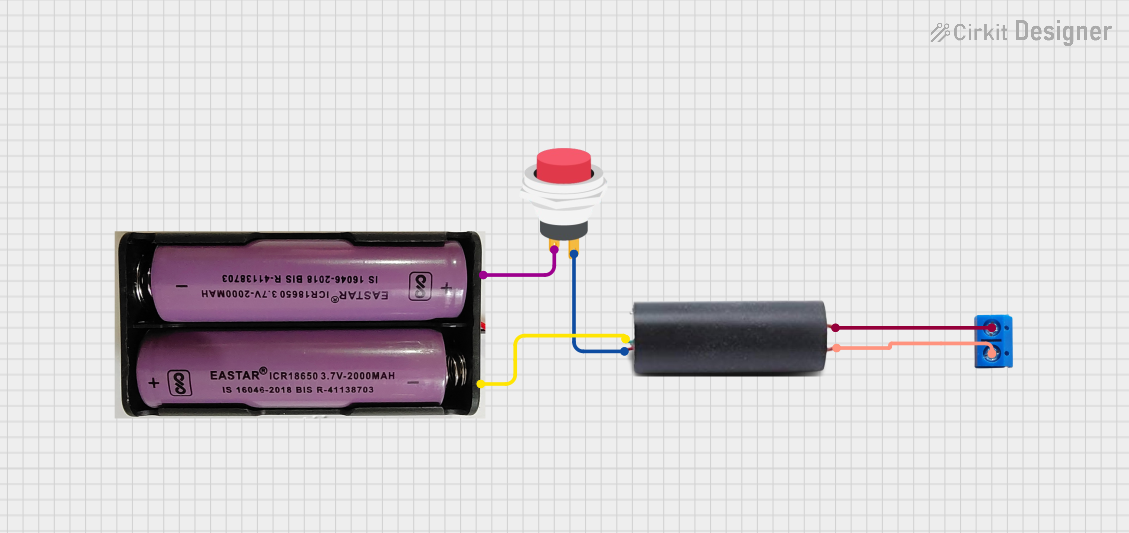
How to Use Terminal Block: Examples, Pinouts, and Specs

 Design with Terminal Block in Cirkit Designer
Design with Terminal Block in Cirkit DesignerIntroduction
A terminal block is a modular, insulated block designed to secure two or more wires together. It provides a convenient and reliable way to connect and disconnect electrical circuits without the need for soldering. Terminal blocks are widely used in electrical and electronic systems for organizing and managing wiring connections. They are available in various sizes, configurations, and current ratings to suit different applications.
Explore Projects Built with Terminal Block

 Open Project in Cirkit Designer
Open Project in Cirkit Designer
 Open Project in Cirkit Designer
Open Project in Cirkit Designer
 Open Project in Cirkit Designer
Open Project in Cirkit Designer
 Open Project in Cirkit Designer
Open Project in Cirkit DesignerExplore Projects Built with Terminal Block

 Open Project in Cirkit Designer
Open Project in Cirkit Designer
 Open Project in Cirkit Designer
Open Project in Cirkit Designer
 Open Project in Cirkit Designer
Open Project in Cirkit Designer
 Open Project in Cirkit Designer
Open Project in Cirkit DesignerCommon Applications and Use Cases
- Industrial control panels and automation systems
- Power distribution and electrical wiring
- Circuit testing and prototyping
- Audio and communication systems
- Renewable energy systems (e.g., solar panels)
- Home and building electrical installations
Technical Specifications
The specifications of a terminal block can vary depending on its type and application. Below are the general technical details for a standard screw-type terminal block:
Key Technical Details
- Voltage Rating: Up to 600V (varies by model)
- Current Rating: 10A to 150A (depending on size and type)
- Wire Gauge Compatibility: 22 AWG to 2 AWG
- Insulation Material: Polyamide (PA66) or other flame-retardant materials
- Operating Temperature: -40°C to +105°C
- Mounting Type: DIN rail, PCB mount, or panel mount
- Connection Type: Screw, spring clamp, or push-in
Pin Configuration and Descriptions
Terminal blocks do not have "pins" in the traditional sense but instead feature connection points for wires. Below is a table describing the key parts of a screw-type terminal block:
| Part | Description |
|---|---|
| Screw Terminal | Secures the wire in place by tightening a screw. |
| Wire Insertion Hole | The opening where the wire is inserted. |
| Insulation Barrier | Prevents electrical contact between adjacent terminals. |
| Mounting Base | The base used to attach the terminal block to a panel, PCB, or DIN rail. |
| Labeling Area | Space for marking or labeling connections for easy identification. |
Usage Instructions
How to Use the Terminal Block in a Circuit
Prepare the Wires:
- Strip the insulation from the end of each wire (typically 5-10mm, depending on the terminal block size).
- Ensure the wire strands are twisted or use ferrules to prevent fraying.
Insert the Wires:
- Loosen the screw on the terminal block to open the wire insertion hole.
- Insert the stripped end of the wire into the hole.
Secure the Connection:
- Tighten the screw to clamp the wire securely in place.
- Avoid overtightening, as this may damage the wire or terminal block.
Connect to the Circuit:
- Repeat the process for all wires, ensuring proper polarity and alignment.
- Use the labeling area to mark connections for easy identification.
Test the Connection:
- Verify the connections using a multimeter to ensure continuity and proper wiring.
Important Considerations and Best Practices
- Wire Compatibility: Always check the wire gauge compatibility of the terminal block before use.
- Tightening Torque: Follow the manufacturer's recommended torque specifications to avoid damaging the terminal block or wires.
- Insulation Check: Ensure no exposed wire is visible outside the terminal block to prevent short circuits.
- Environmental Conditions: Use terminal blocks rated for the operating temperature and environmental conditions of your application.
- Safety: Disconnect power before making or modifying connections.
Example: Connecting a Terminal Block to an Arduino UNO
While terminal blocks are not directly connected to an Arduino UNO, they can be used to organize and distribute power or signals in a circuit. Below is an example of using a terminal block to distribute power to multiple devices:
// Example: Distributing 5V power from Arduino UNO to multiple devices
// through a terminal block
// No specific code is required for the terminal block itself, as it is a
// passive component. However, ensure the Arduino's 5V pin is connected
// to the terminal block, and the devices are connected to the other
// terminals.
void setup() {
// Initialize any connected devices here
// For example, sensors or modules powered via the terminal block
}
void loop() {
// Main program logic
}
Troubleshooting and FAQs
Common Issues and Solutions
| Issue | Solution |
|---|---|
| Loose connections | Ensure the screws are tightened properly and the wires are securely clamped. |
| Wire fraying or slipping out | Use ferrules or twist the wire strands before inserting them. |
| Overheating of terminal block | Check the current rating and ensure it is not exceeded. |
| Short circuits between adjacent terminals | Verify that the insulation barriers are intact and wires are properly inserted. |
| Difficulty inserting wires | Ensure the screws are loosened enough to allow wire insertion. |
FAQs
Can terminal blocks handle high currents?
- Yes, but you must select a terminal block with an appropriate current rating for your application.
Are terminal blocks reusable?
- Yes, terminal blocks can be reused as long as they are not damaged or worn out.
What is the difference between screw and spring clamp terminal blocks?
- Screw terminal blocks use screws to secure wires, while spring clamp terminal blocks use a spring mechanism for faster and tool-free connections.
Can terminal blocks be used outdoors?
- Only if they are rated for outdoor use and protected against moisture and environmental factors.
How do I choose the right terminal block for my project?
- Consider factors such as voltage and current ratings, wire gauge compatibility, mounting type, and environmental conditions.